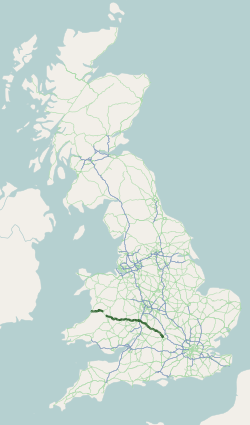|
Broadwas
Broadwas, or Broadwas-on-Teme, is a village and civil parish (with Cotheridge) in the Malvern Hills district of Worcestershire, England. According to the 2021 census it had a population of 387. The village is located on the River Teme, about 6 miles west of Worcester on the A44 road. Off the main road near the River Teme is the red sandstone church of St Mary Magdelene. History Following the Poor Law Amendment Act 1834 The Poor Law Amendment Act 1834 (4 & 5 Will. 4. c. 76) (PLAA) known widely as the New Poor Law, was an Act of Parliament (United Kingdom), act of the Parliament of the United Kingdom passed by the British Whig Party, Whig government of Charles ... Broadwas Parish ceased to be responsible for maintaining the poor in its parish. This responsibility was transferred to Martley Poor Law Union.''Worcestershire Family History Guidebook'' Morgan, Vanessa 2011, The History Press, Stroud, Gloucestershire.p68 References External links Broadwas web site ... [...More Info...] [...Related Items...] OR: [Wikipedia] [Google] [Baidu] |
River Teme
The River Teme (pronounced ; ) rises in Mid Wales, south of Newtown, and flows southeast roughly forming the border between England and Wales for several miles through Knighton before entering England in the vicinity of Bucknell and continuing east to Ludlow in Shropshire. From there, it flows to the north of Tenbury Wells on the Shropshire/Worcestershire border on its way to join the River Severn south of Worcester. The whole of the River Teme was designated as an SSSI by English Nature in 1996. The river is crossed by a number of historic bridges including one at Tenbury Wells that was rebuilt by Thomas Telford following flood damage in 1795. It is also crossed, several times, by the Elan aqueduct. Etymology The first known mention of the River Teme is in an eleventh-century manuscript containing a copy of a charter from around 770, where the name takes the forms ''Tamede'' and ''Temede''.A. Mawer and F. M. Stenton, ''The Place-Names of Worcestershire'', English Place- ... [...More Info...] [...Related Items...] OR: [Wikipedia] [Google] [Baidu] |
Malvern Hills (district)
Malvern Hills is a Districts of England, local government district in Worcestershire, England. Its council is based in Malvern, Worcestershire, Malvern, the district's largest town. The district also includes the towns of Tenbury Wells and Upton-upon-Severn and a large rural area covering much of the western side of the county, including numerous villages. The district is named after the Malvern Hills, which are a designated Area of Outstanding Natural Beauty. The district formed in 1998 had different boundaries from the 1974–1998 district. In the 2021 United Kingdom census, 2021 census the population of the Malvern Hills district was 79,973. The neighbouring districts are Wyre Forest District, Wyre Forest, Wychavon, Worcester, England, Worcester, Borough of Tewkesbury, Tewkesbury, Forest of Dean District, Forest of Dean, Herefordshire and Shropshire (district), Shropshire. History On 1 April 1998 the county of Hereford and Worcester was abolished, being split into a Unitar ... [...More Info...] [...Related Items...] OR: [Wikipedia] [Google] [Baidu] |
A44 Road
The A44 is a major road in the United Kingdom that runs from Oxford in southern England to Aberystwyth in west Wales. History The original (1923) route of the A44 was Chipping Norton to Aberystwyth. No changes were made to the route of the A44 in the early years. After the Second World War, the section between Rhayader and Llangurig was renumbered A470, as part of the long road in Wales that connects Cardiff on the south coast to Llandudno on the north coast. The A44 was extended to Oxford in the 1990s, replacing part of the A34 when the M40 motorway was completed. Route Oxford–Evesham The road begins at a roundabout junction with the A40 road on the northern section of Oxford's ring road in Oxfordshire. It has a grade separated junction with the A34 road (leading to the M40 motorway and Winchester). From here, the road runs northwest, and has a section of dual-carriageway through the villages of Yarnton and Begbroke before reaching the town of Woodstock, home to ... [...More Info...] [...Related Items...] OR: [Wikipedia] [Google] [Baidu] |
Martley Poor Law Union
Following the Poor Law Amendment Act 1834 individual parishes ceased to be responsible for maintaining the poor in their parish. Poor law unions were established. In west Worcestershire the Martley Poor Law Union was established to take the poor from the following parishes Abberley, Alfrick, Astley, Bransford, Broadwas, Clifton-upon-Teme, Cotheridge, Doddenham, Great Witley, Grimley, Hallow, Holt, Knightwick, Leigh, Little Witley, Lulsley, Martley, Pensax, Shelsley, Shrawley, Suckley and Wichenford Wichenford is a village and civil parish (with Kenswick, Worcestershire, Kenswick) in the Malvern Hills (district), Malvern Hills District in the county of Worcestershire, England. It lies 7 miles (11 km) to the north-west of the city of ....''Worcestershire Family History Guidebook'', Vanessa Morgan, 2011, p68 The History Press, Stroud, Gloucestershire. References Poor law unions in England History of Worcestershire {{Worcestershire-stub ... [...More Info...] [...Related Items...] OR: [Wikipedia] [Google] [Baidu] |
Worcestershire
Worcestershire ( , ; written abbreviation: Worcs) is a Ceremonial counties of England, ceremonial county in the West Midlands (region), West Midlands of England. It is bordered by Shropshire, Staffordshire, and the West Midlands (county), West Midlands county to the north, Warwickshire to the east, Gloucestershire to the south, and Herefordshire to the west. The city of Worcester, England, Worcester is the largest settlement and the county town. The county is largely rural, and has an area of and a population of 592,057. After Worcester (103,872) the largest settlements are Redditch (87,036), Kidderminster (57,400), and Bromsgrove (34,755). It contains six local government Non-metropolitan district, districts, which are part of a two-tier non-metropolitan county also called Worcestershire County Council, Worcestershire. The county Historic counties of England, historically had Evolution of Worcestershire county boundaries since 1844, complex boundaries, and included Dudley an ... [...More Info...] [...Related Items...] OR: [Wikipedia] [Google] [Baidu] |
Civil Parish
In England, a civil parish is a type of administrative parish used for local government. It is a territorial designation which is the lowest tier of local government. Civil parishes can trace their origin to the ancient system of parishes, which for centuries were the principal unit of secular and religious administration in most of England and Wales. Civil and religious parishes were formally split into two types in the 19th century and are now entirely separate. Civil parishes in their modern form came into being through the Local Government Act 1894 ( 56 & 57 Vict. c. 73), which established elected parish councils to take on the secular functions of the parish vestry. A civil parish can range in size from a sparsely populated rural area with fewer than a hundred inhabitants, to a large town with a population in excess of 100,000. This scope is similar to that of municipalities in continental Europe, such as the communes of France. However, unlike their continental Euro ... [...More Info...] [...Related Items...] OR: [Wikipedia] [Google] [Baidu] |
Cotheridge
Cotheridge is a village and civil parish in the district of Malvern Hills in the county of Worcestershire, England. It is west of the city of Worcester and a mile north-east of the Leigh Court railway station on the Great Western Railway on the opposite side of the River Teme. The River Teme flows on the southern and south-western part of the village where the land is low-lying and is susceptible to flooding. The soil content is loam and clay with the subsoil being Keuper Marl. The village is small with most of its residents being widespread. It is noted for its 12th century St. Leonard's Church and manor house. There have been many variations of the name over the centuries including ''Coddanhrycce'' (10th century); ''Codderycce'', ''Koderie'', and ''Codrie'' (11th century); ''Kodere'', ''Coddarycge'' (12th century); ''Codrigg'', ''Coderigge'', ''Codrugge'' (13th century); Coterugge (14th century); ''Coderych'', Coderiche (15/16th centuries); ''Cotheridge'', ''Cowtri ... [...More Info...] [...Related Items...] OR: [Wikipedia] [Google] [Baidu] |
Worcester, England
Worcester ( ) is a cathedral city in Worcestershire, England, of which it is the county town. It is south-west of Birmingham, north of Gloucester and north-east of Hereford. The population was 103,872 in the 2021 census. The River Severn flanks the western side of the city centre, overlooked by Worcester Cathedral. Worcester is the home of Royal Worcester, Royal Worcester Porcelain, Lea & Perrins (makers of traditional Worcestershire sauce), the University of Worcester, and ''Berrow's Worcester Journal'', claimed as the world's oldest newspaper. The composer Edward Elgar (1857–1934) grew up in the city. The Battle of Worcester in 1651 was the final battle of the English Civil War, during which Oliver Cromwell's New Model Army defeated Charles II of England, King Charles II's Cavalier, Royalists. History Early history The trade route past Worcester, later part of the Roman roads in Britain, Roman Ryknild Street, dates from Neolithic times. It commanded a ford crossing o ... [...More Info...] [...Related Items...] OR: [Wikipedia] [Google] [Baidu] |
Sandstone
Sandstone is a Clastic rock#Sedimentary clastic rocks, clastic sedimentary rock composed mainly of grain size, sand-sized (0.0625 to 2 mm) silicate mineral, silicate grains, Cementation (geology), cemented together by another mineral. Sandstones comprise about 20–25% of all sedimentary rocks. Most sandstone is composed of quartz or feldspar, because they are the most resistant minerals to the weathering processes at the Earth's surface. Like uncemented sand, sandstone may be imparted any color by impurities within the minerals, but the most common colors are tan, brown, yellow, red, grey, pink, white, and black. Because sandstone beds can form highly visible cliffs and other topography, topographic features, certain colors of sandstone have become strongly identified with certain regions, such as the red rock deserts of Arches National Park and other areas of the Southwestern United States, American Southwest. Rock formations composed of sandstone usually allow the p ... [...More Info...] [...Related Items...] OR: [Wikipedia] [Google] [Baidu] |
Poor Law Amendment Act 1834
The Poor Law Amendment Act 1834 (4 & 5 Will. 4. c. 76) (PLAA) known widely as the New Poor Law, was an Act of Parliament (United Kingdom), act of the Parliament of the United Kingdom passed by the British Whig Party, Whig government of Charles Grey, 2nd Earl Grey, Earl Grey denying the right of the poor to subsistence. It completely replaced earlier legislation based on the Poor Relief Act 1601 (43 Eliz. 1. c. 2) and attempted to fundamentally change the social security, poverty relief system in England and Wales (similar changes were made to the Scottish Poor Laws, poor law for Scotland in 1845). It resulted from the 1832 Royal Commission into the Operation of the Poor Laws, which included Edwin Chadwick, John Bird Sumner and Nassau William Senior. Chadwick was dissatisfied with the law that resulted from his report. The Act was passed two years after the Reform Act 1832, Representation of the People Act 1832 which extended the Suffrage, franchise to middle-class men. Some histo ... [...More Info...] [...Related Items...] OR: [Wikipedia] [Google] [Baidu] |
Villages In Worcestershire
A village is a human settlement or Residential community, community, larger than a hamlet (place), hamlet but smaller than a town with a population typically ranging from a few hundred to a few thousand. Although villages are often located in rural areas, the term urban village is also applied to certain urban neighborhoods. Villages are normally permanent, with fixed dwellings; however, transient villages can occur. Further, the dwellings of a village are fairly close to one another, not scattered broadly over the landscape, as a dispersed settlement. In the past, villages were a usual form of community for societies that practice subsistence agriculture and also for some non-agricultural societies. In Great Britain, a hamlet earned the right to be called a village when it built a Church (building), church. [...More Info...] [...Related Items...] OR: [Wikipedia] [Google] [Baidu] |







